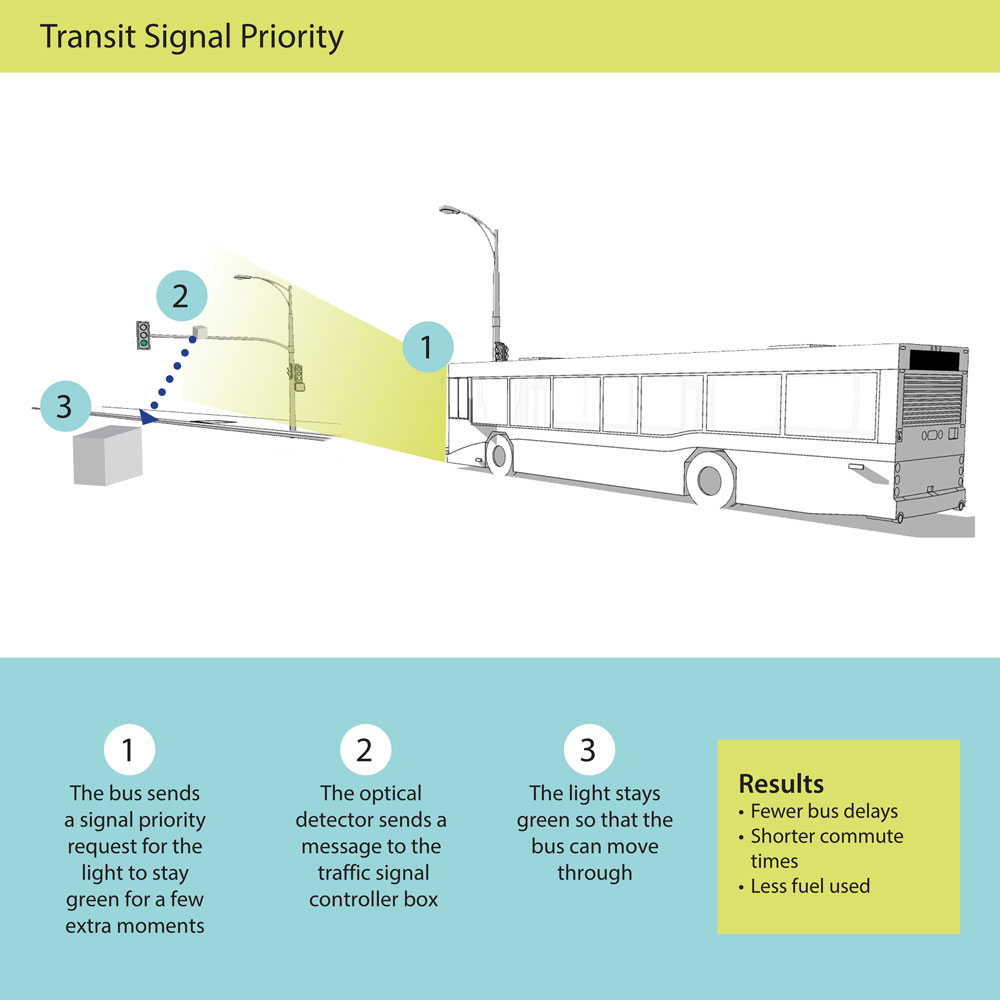Strategy 3 Increase available resources for transit and actively manage capital transit investments.
The actions within this strategy are divided into two categories:
Action we will DOActions we will SUPPORTAction we will do are followed by “DO” and are colored in dark gray, and actions we will support are followed by “SUPPORT” and are colored in light gray.
Learn more about how we get thereCurrently, the City contributes to transit improvements through partnerships with Metro Transit and funding from our cooperative project fund in the Capital Improvement Program. As the City prioritizes its role in making transit work more effectively, leveraging existing mechanisms to fund transit improvements is an important part of the work. Existing mechanisms include:
- Cooperative project funding
- Partnering with private development to include transit amenities into building construction projects
- Land use controls through the Department of Community Planning and Economic Development, including incentivizing transit through parking regulations
- Adjusting signal timing and including transit priority signalization along transit corridors
- Redesigning streets to allow better transit facilities and interactions with other modes, particularly along the curb.
Transit Strategy 3 actions focus on adjustments to our existing tools to better recognize transit improvements as a prioritizing force within our capital program as well as to look creatively to leverage additional resources for transit improvements on city streets in coordination with regional partners.
Actions to increase available resources for transit and actively manage capital transit investments.
Transit 3.1
Modify capital programs to support transit investments on corridors that have the highest ridership and lowest car ownership rates and allocate funds in a manner that advances citywide transit priorities.
Supported goals:
Equity Mobility Active Partnerships
Related actions:
Difficulty:
High
Timeframe:
2024-2027 (Years 4-7)
Transit 3.2
Work with the Department of Community Planning and Economic Development and other agency partners to convert excess right of way to development parcels; an example includes along Olson Memorial Highway (Highway 55).
Supported goals:
Mobility Active Partnerships
Related actions:
Difficulty:
High
Timeframe:
2024-2027 (Years 4-7)
Transit 3.3
Continue to leverage private development opportunities to implement or improve transit investments in the public right of way.
Supported goals:
Climate Mobility Active Partnerships
Related actions:
Difficulty:
Medium
Timeframe:
2020-2023 (Years 0-3)
Status:
On-going
Transit 3.4
Support transit infrastructure improvements during freeway bridge maintenance and replacement projects along transit corridors.
Supported goals:
Climate Mobility Active Partnerships
Related actions:
Difficulty:
Low
Timeframe:
2020-2023 (Years 0-3)
Status:
On-going
Transit 3.5
Support regional efforts to better operate transit through larger regional investments in high-impact locations in Minneapolis. Examples include exploring better operations for buses at the Washington Avenue and Interstate 35 W intersection.
Supported goals:
Climate Prosperity Mobility Active Partnerships
Related actions:
Difficulty:
Medium
Timeframe:
2020-2023 (Years 0-3)
Status:
On-going
See also actions:
- Street Operations 6.5
Eliminate gaps in the street grid and reopen Nicollet Avenue at Lake Street

